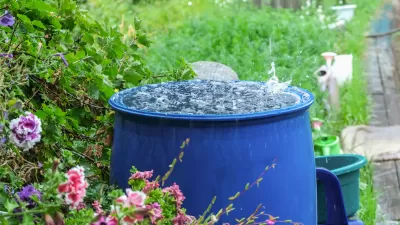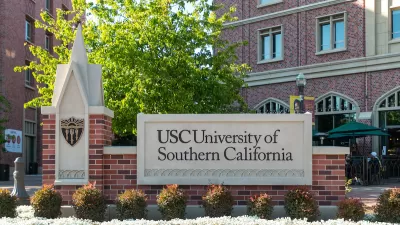Recent articles on uncomfortably loud environments in New York and Los Angeles raise an interesting question - is noise pollution a necessary part of city living or is it a health hazard that should be addressed?
The rise in attention to the impact of noise pollution on those living and working in America's biggest cities was kicked off by an article that appeared on July 19 in The New York Times detailing what reporters found when they measured noise levels at 37 restaurants, bars, stores and gyms across
the city. According to reporter Cara Buckley, "loud noise has become a fact of life in the very places where people have traditionally sought respite from urban stress" and from the sampling of establishments that The Times visited, reporters "found [noise] levels that experts said bordered on dangerous at
one-third of them."
A couple of days after the article was published, Michael Kimmelman, architecture critic for The Times, addressed the noise issue on his twitter feed: "Still shocked since returning to NY by noise pollution--subways, sirens,
restaurants. Not a sign of big city grit, but an urban blight." The next day he tweeted a follow-up, "Why is NY so glorious on summer weekends? Partly the quiet. Noise pollution is the next ecological challenge for the city."
More recently Nate Berg has published two pieces in The Atlantic Cities focused on the impact of noise on transit commuters and outdoor concertgoers in Los Angeles.
Do these articles represent a newfound sensitivity to the sounds of the city as more people embrace urban living, or a profound shift in the decibel levels city dwellers are inundated with on a daily basis? Will urban Americans raise their voices in protest of an emerging public health hazard, or will the concerns identified by the authors above be lost amongst the din of the urban news cycle?
FULL STORY: For L.A. Residents Fed Up With Helicopter Noise, a Final Straw

Planetizen Federal Action Tracker
A weekly monitor of how Trump’s orders and actions are impacting planners and planning in America.

Restaurant Patios Were a Pandemic Win — Why Were They so Hard to Keep?
Social distancing requirements and changes in travel patterns prompted cities to pilot new uses for street and sidewalk space. Then it got complicated.

Maui's Vacation Rental Debate Turns Ugly
Verbal attacks, misinformation campaigns and fistfights plague a high-stakes debate to convert thousands of vacation rentals into long-term housing.

In California Battle of Housing vs. Environment, Housing Just Won
A new state law significantly limits the power of CEQA, an environmental review law that served as a powerful tool for blocking new development.

Boulder Eliminates Parking Minimums Citywide
Officials estimate the cost of building a single underground parking space at up to $100,000.

Orange County, Florida Adopts Largest US “Sprawl Repair” Code
The ‘Orange Code’ seeks to rectify decades of sprawl-inducing, car-oriented development.
Urban Design for Planners 1: Software Tools
This six-course series explores essential urban design concepts using open source software and equips planners with the tools they need to participate fully in the urban design process.
Planning for Universal Design
Learn the tools for implementing Universal Design in planning regulations.
Heyer Gruel & Associates PA
JM Goldson LLC
Custer County Colorado
City of Camden Redevelopment Agency
City of Astoria
Transportation Research & Education Center (TREC) at Portland State University
Jefferson Parish Government
Camden Redevelopment Agency
City of Claremont





























